While I was writing my post on the Single Fork Aures crane I got a message from a Bushcraft USA member called Alukban about another type of campfire crane, which was made out of a single piece of wood and looked quite straightforward to carve.
The connection between the arm and the upright is a type of Lap Joint. It is easy to adjust and can take the weight of a decent-sized pot.
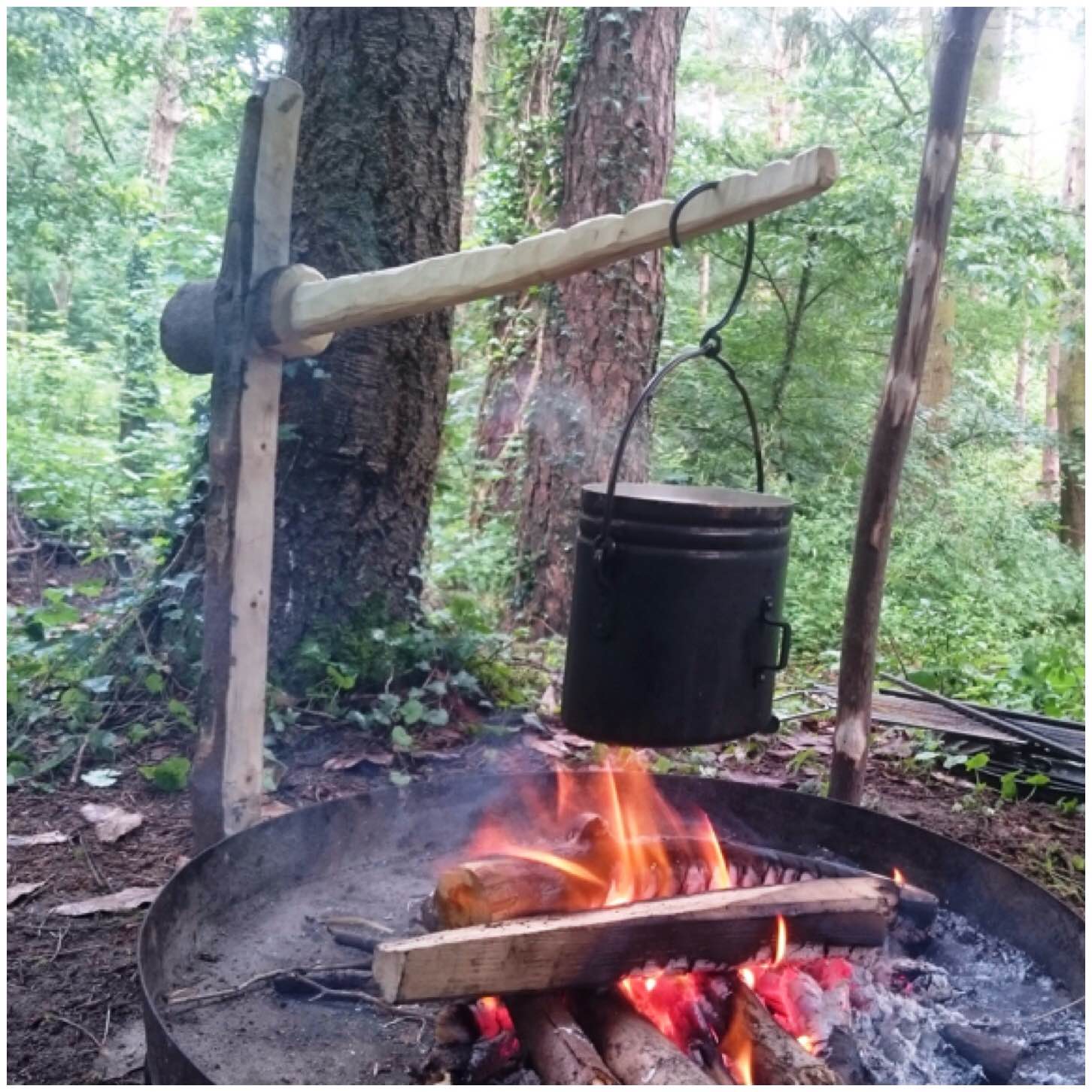
Trimming
I had some sycamore lying around, about a metre and a half long. I trimmed the fork off the end as it was not needed and then cut the pole into two further pieces.
In the picture below all the wood to the left of the folding saw became the arm and the rest became the upright for the crane.

The upright
I squared off three of the sides of the upright along two thirds of its length and formed a point on the bottom third.
I took my time doing this so that it was as even and as smooth as possible along its length where it was squared.
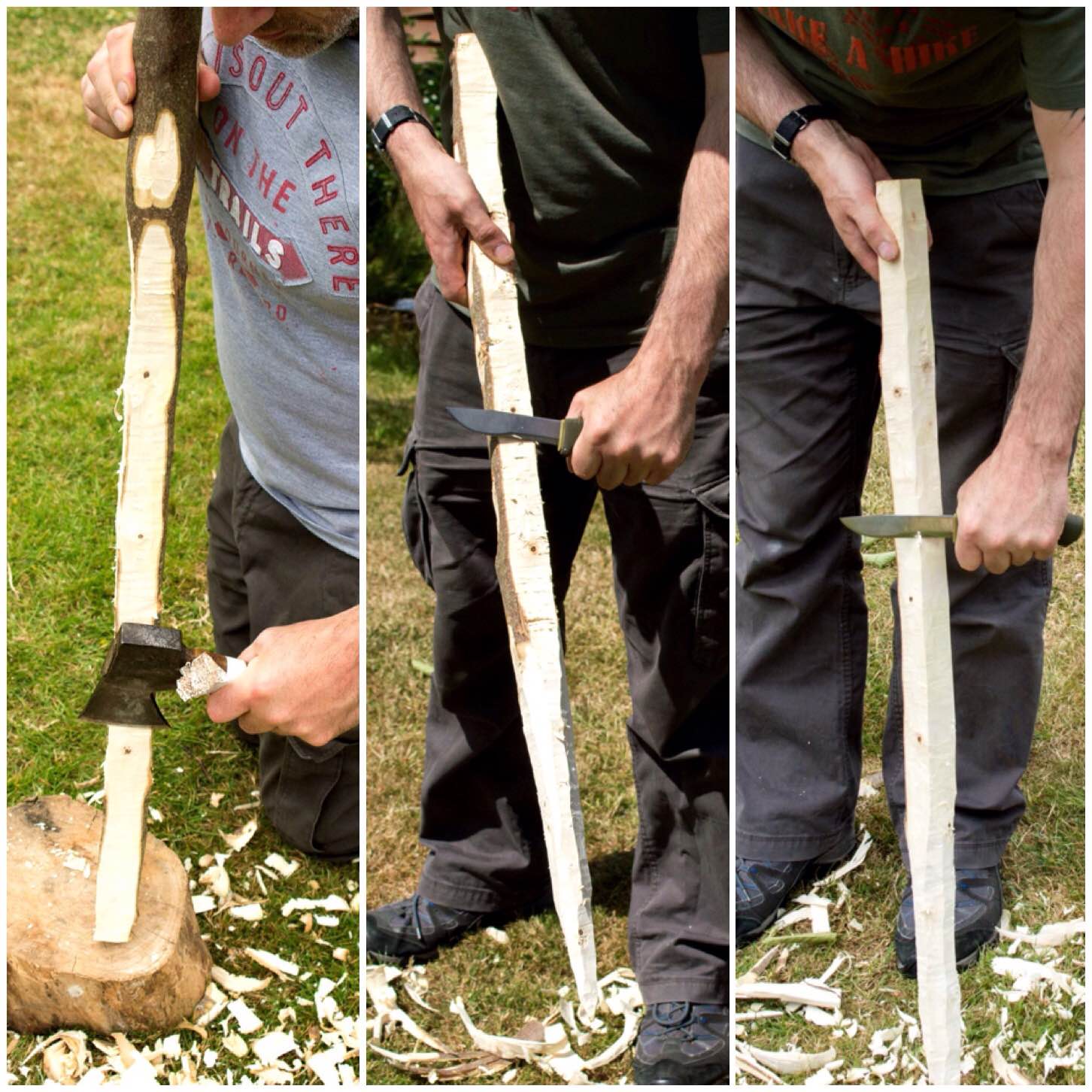
Once I was happy with the upright I moved onto the arm. The whole crane works on the principle that the weight of a pot hanging on it will create enough friction to hold the arm against the upright.
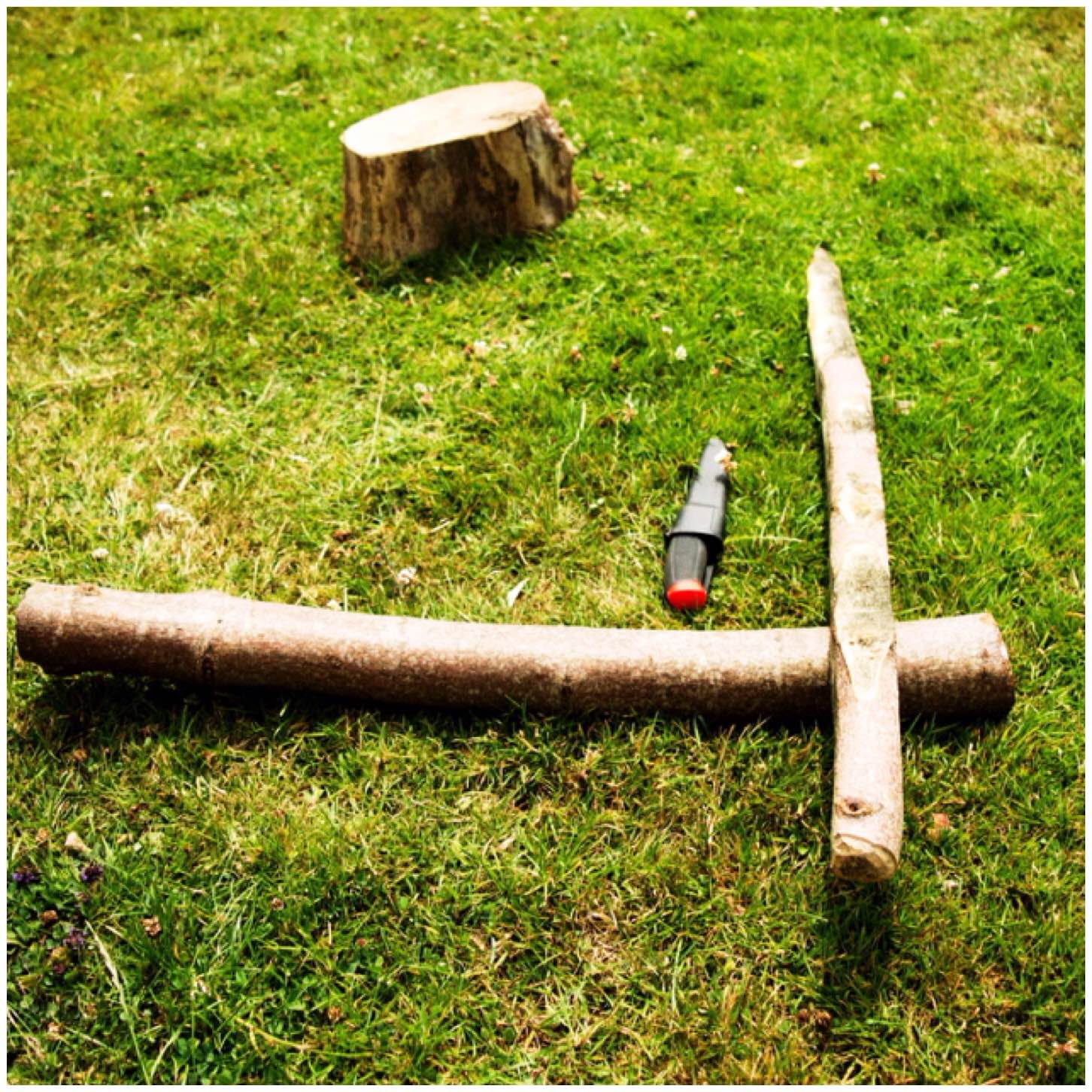
The arm
I used the upright as a guide to measuring where I need to cut out the lap joint on the arm (I measured it so that the lap joint would be very tight initially). I did not make this a 90 degree angle but about 100 degrees, so that the tip of the arm would be pointing slightly upwards.
Once I had marked the width on the arm I cut some stop cuts to half the depth of the arm and then added some more to make it easier to carve out.
I also used my saw to carve out some of the excess wood from the joint area.
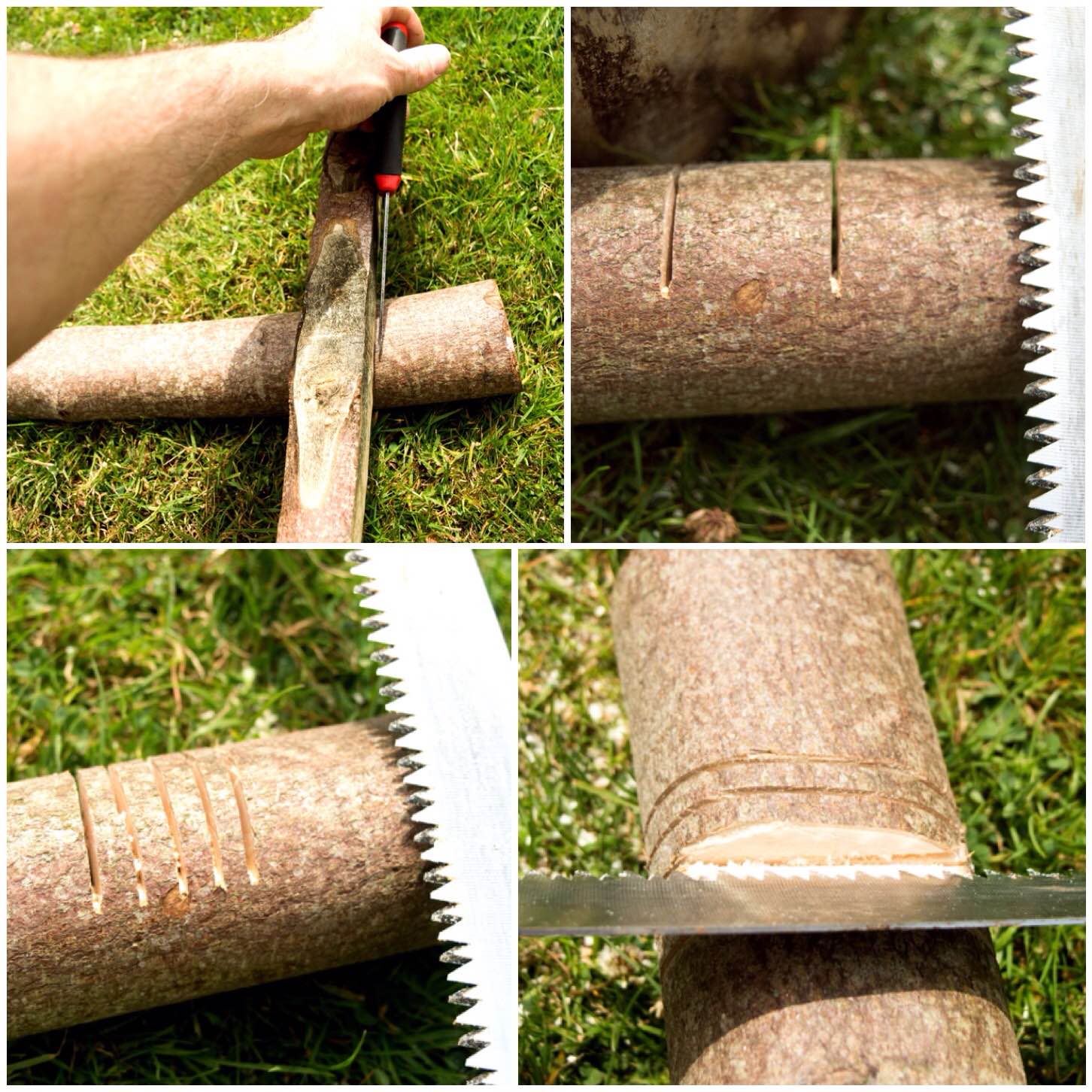
Once I had taken out most of the excess wood with the saw I used my knife to remove the rest and make it all smooth.
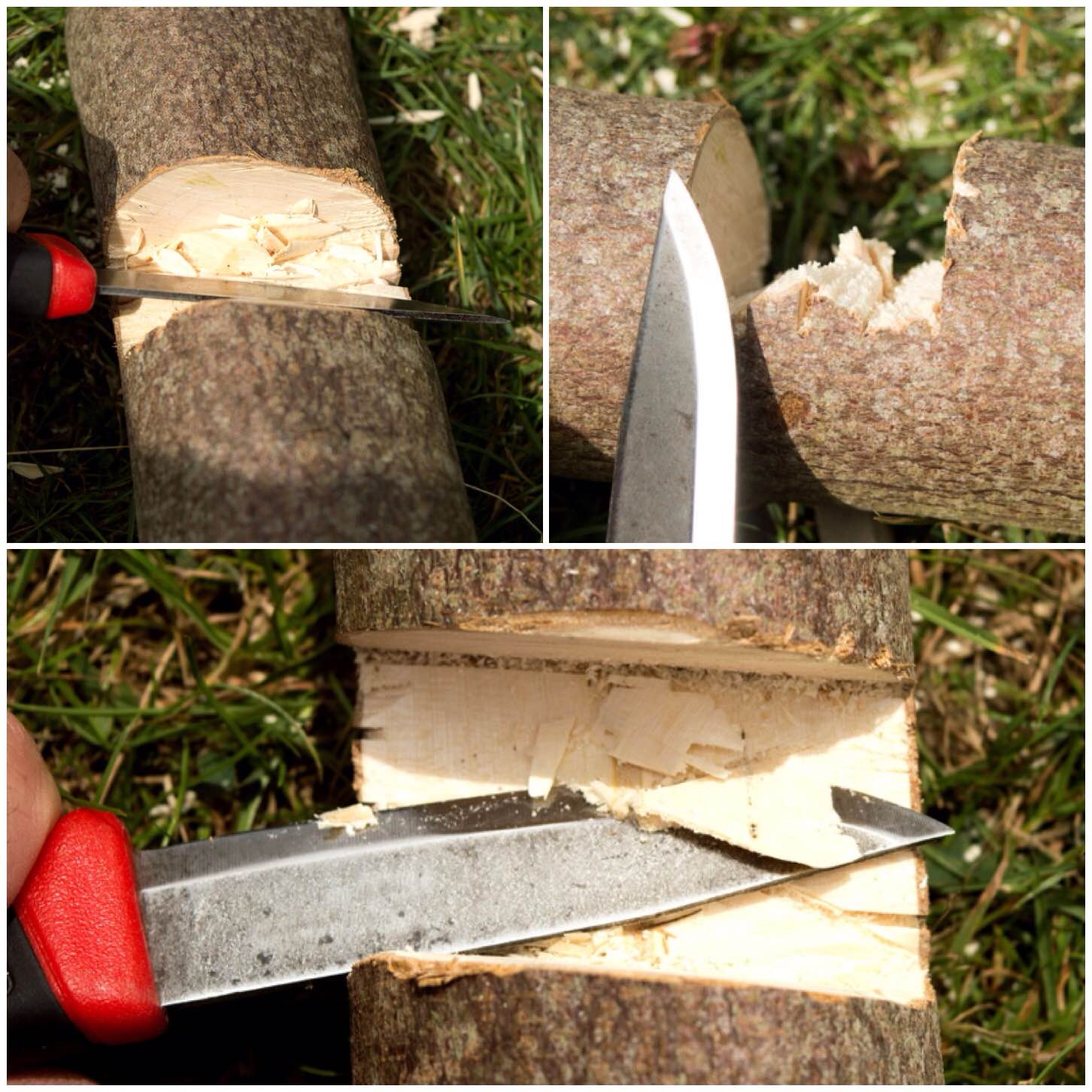
I locked the two pieces together and started to move the arm up and down the upright. This allowed me to spot rough areas still on the upright and then I was able to easily trim that wood off with my knife.
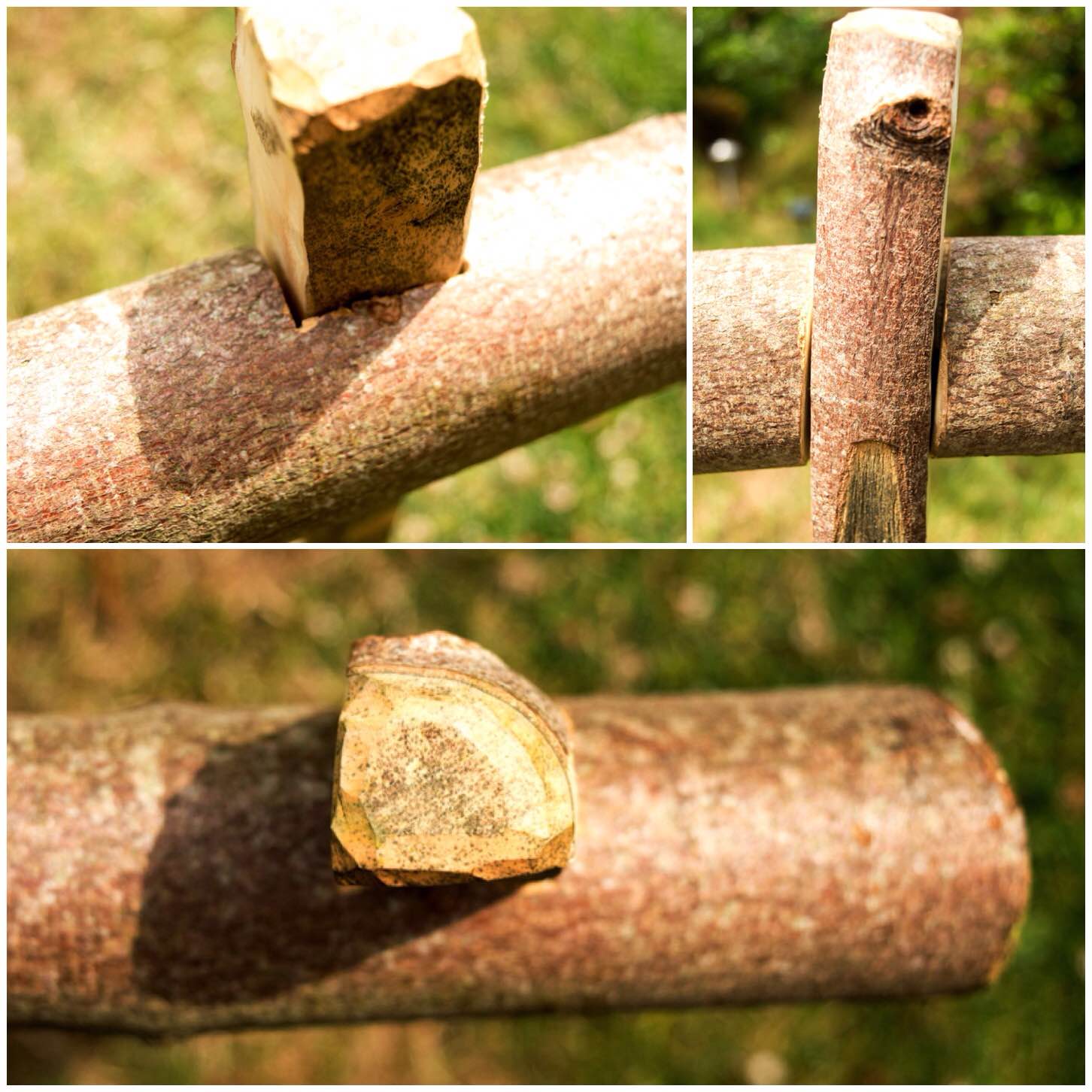
Once I was happy that the arm could move easily up and down the upright I trimmed of loads of excess wood from the arm to make it easier to attach a pot.
I put a stop cut about a quarter of the depth of the arm all the way around it to protect the wood around the lap joint.
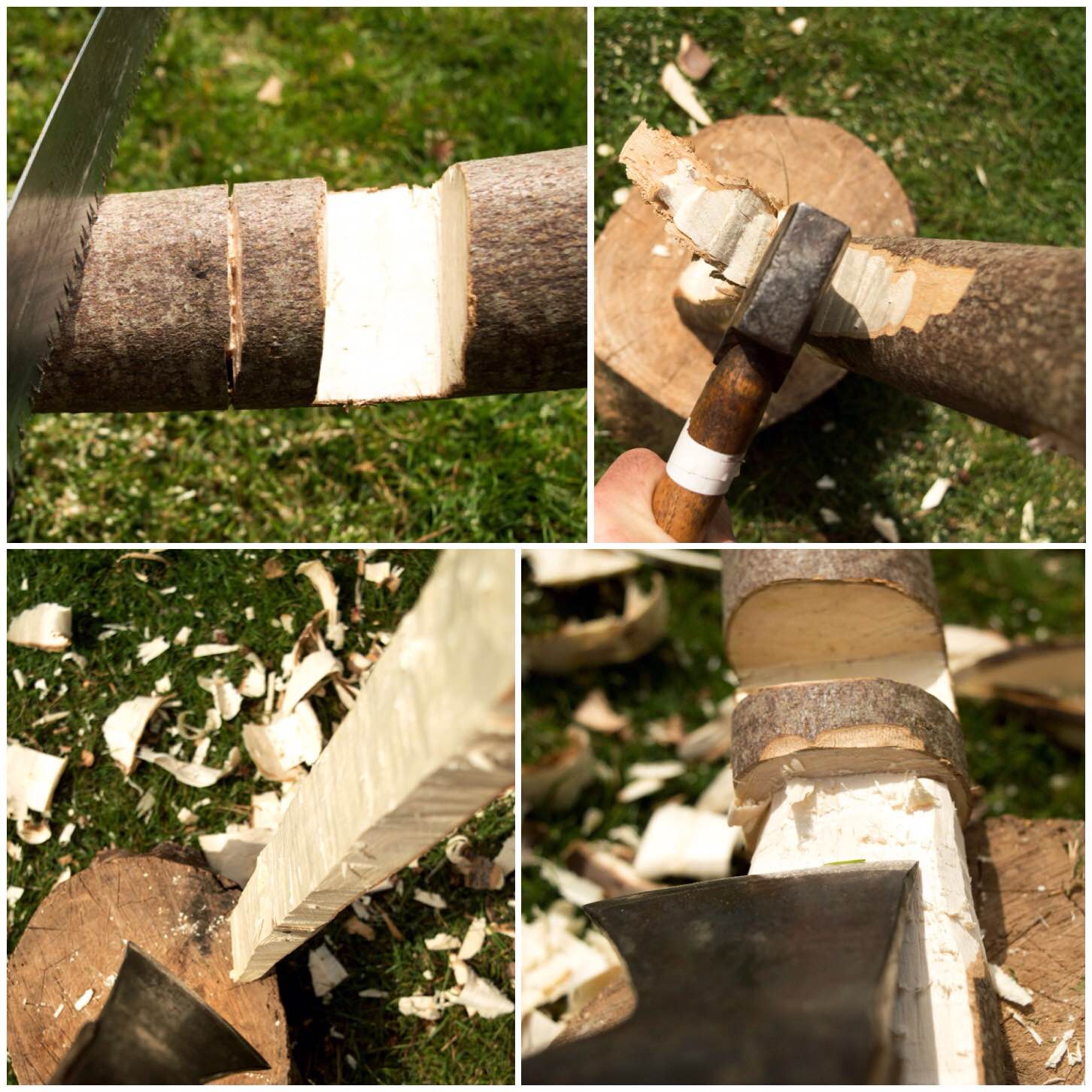
You can see the general shape of the arm appearing now. I likened it to the shape of an old-style naval cutlass.
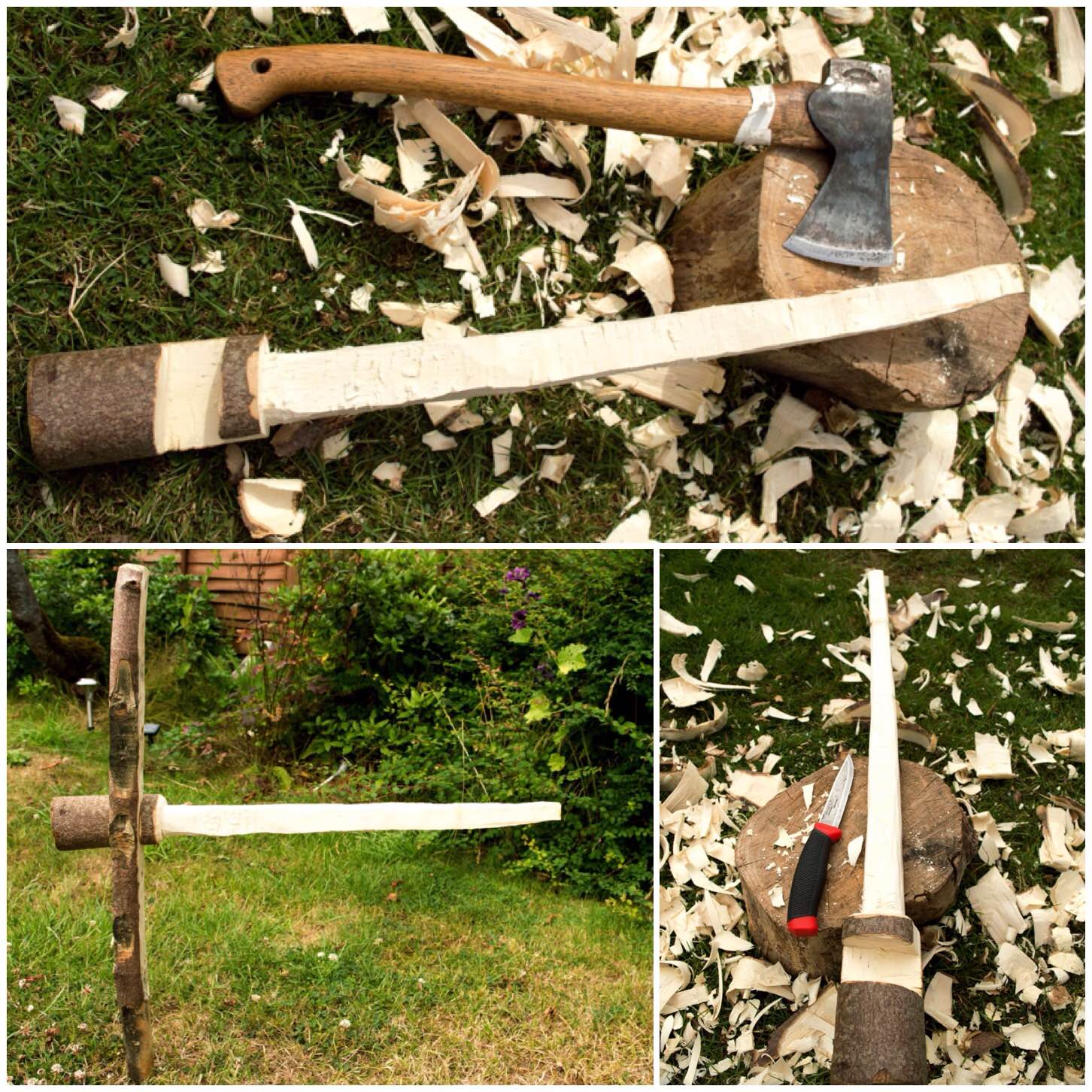
In use
I added a few ridges along the length of the arm to hold pots securely and then started trying it out.
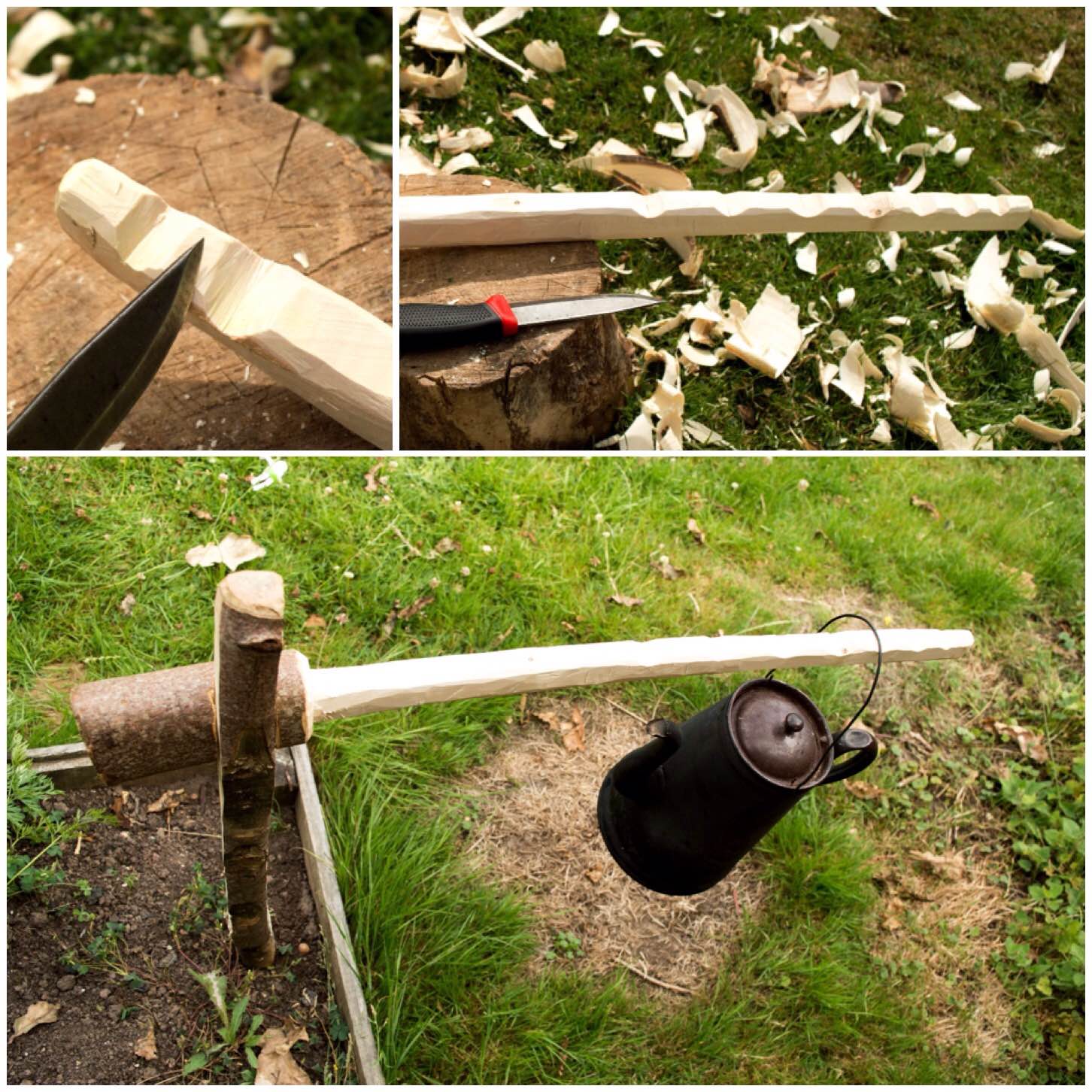
I used this crane for two weeks at the Bushcraft UK Bushmoot in South Wales over the summer and was quite impressed with it. It holds pots well under tension but it needs to be treated with respect when moving the pot up and down.
I found that the crane works best with the pot hanging from near the end of the arm. If you move the pot closer to the upright along the arm it has a tendency to slip.
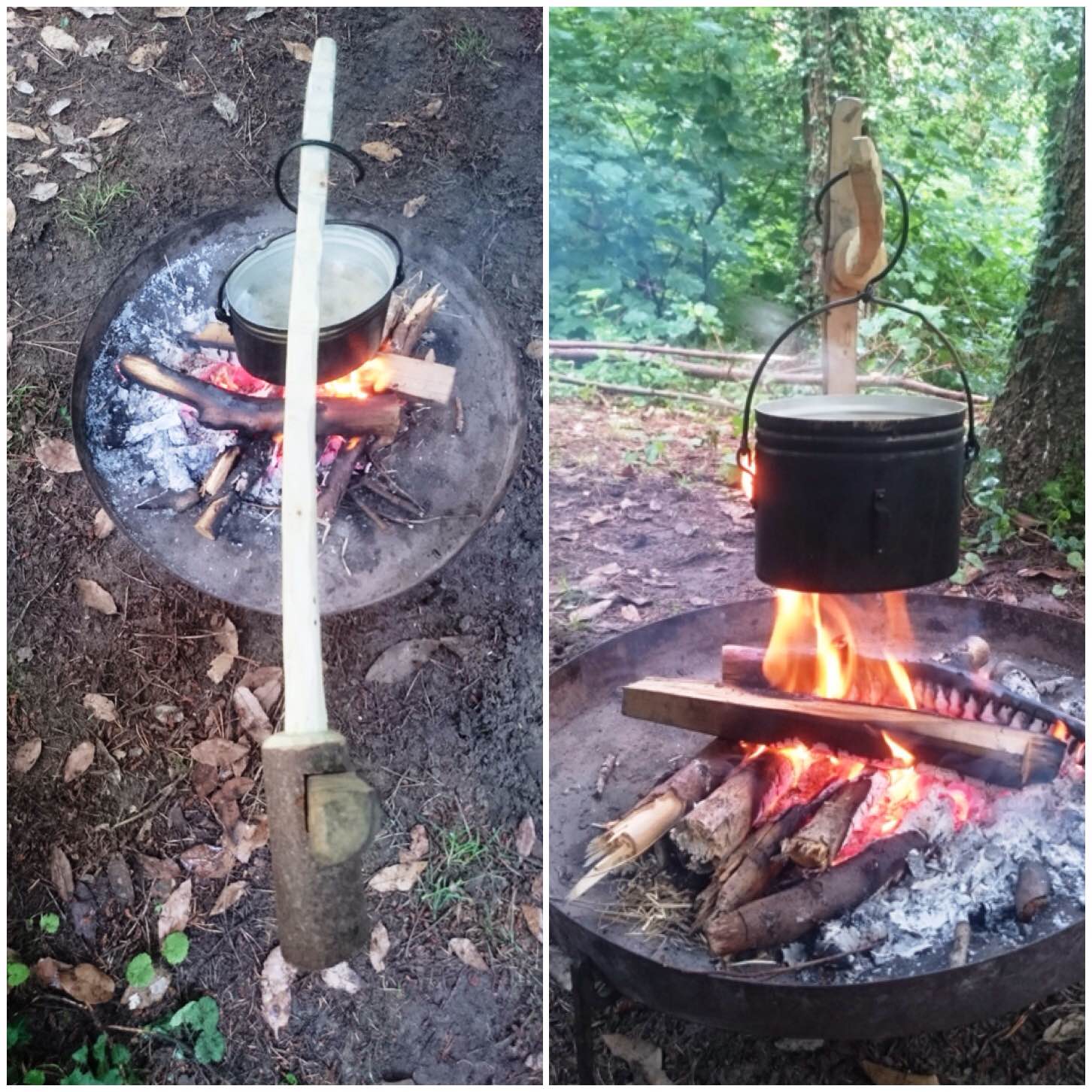
I will be making a variation of this style over the next few days with more of a dovetail joint so that the arm cannot come off so easily.
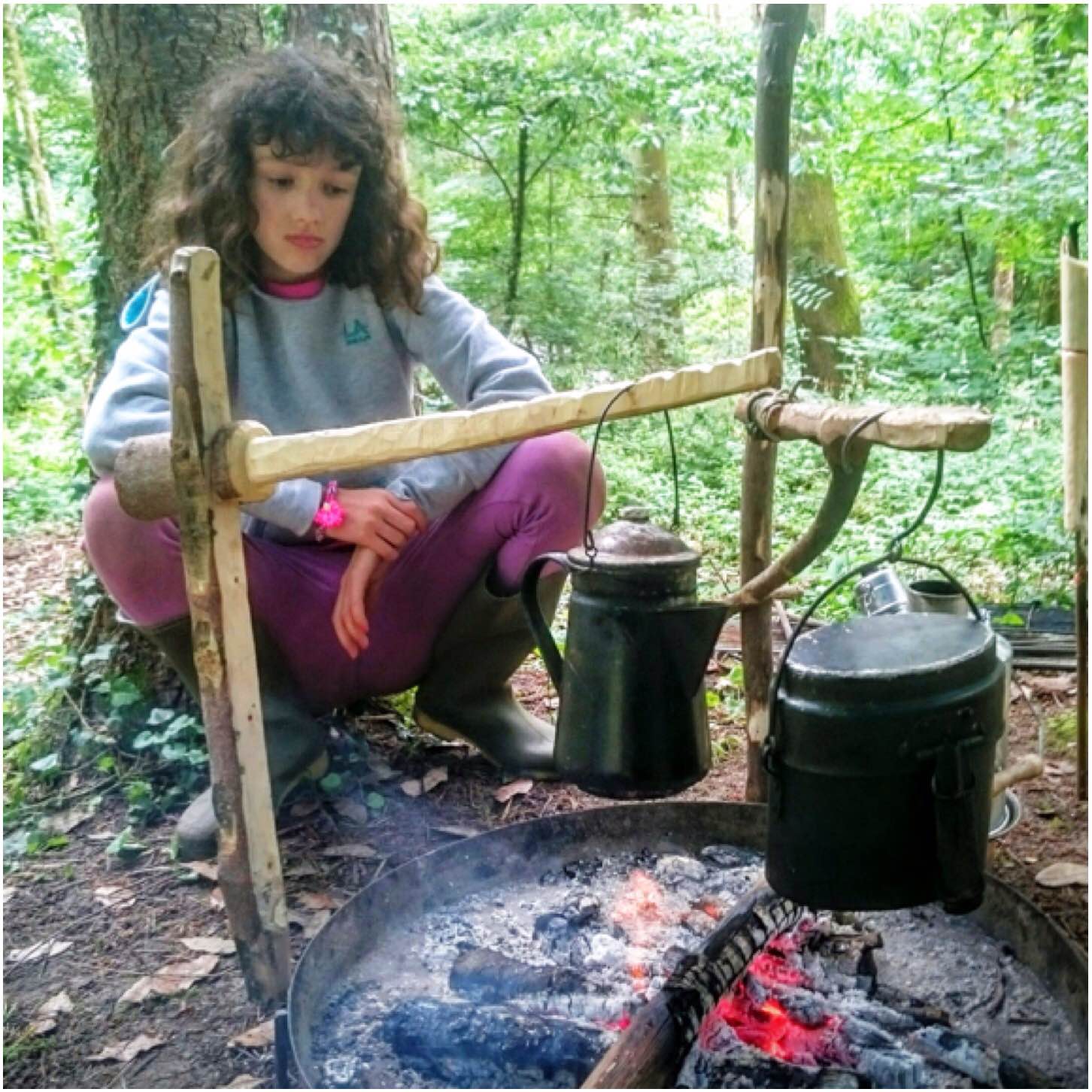
I like this crane due to its simplicity so give it a go.
Cheers
George
